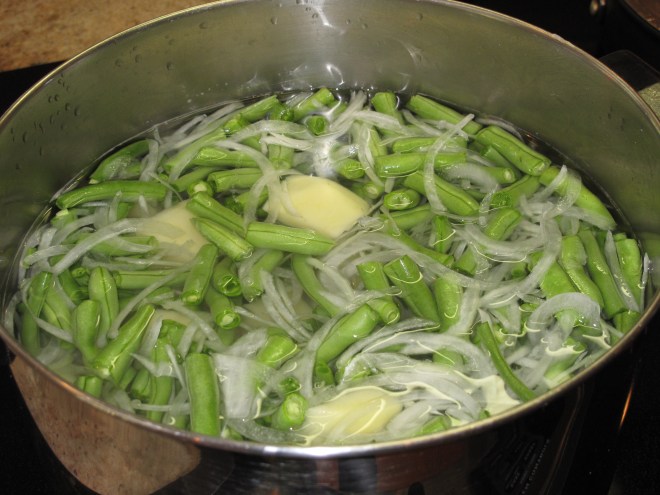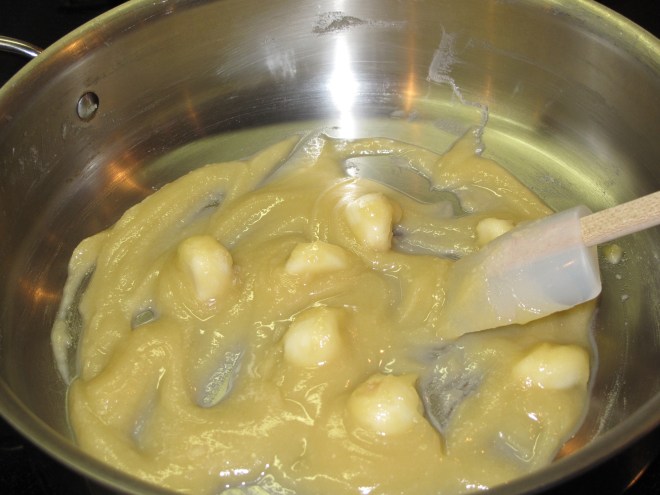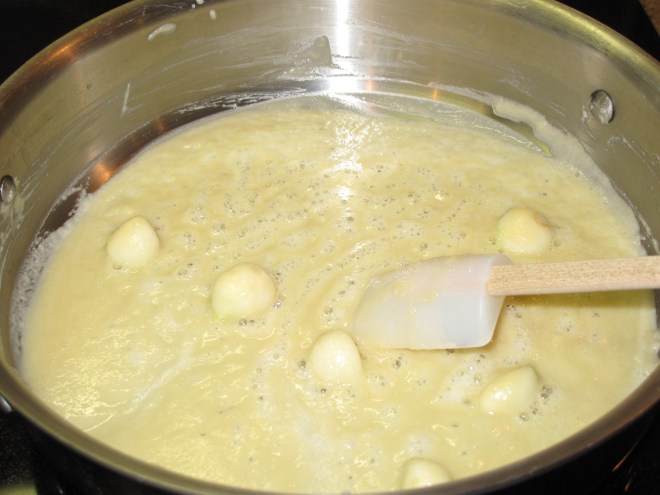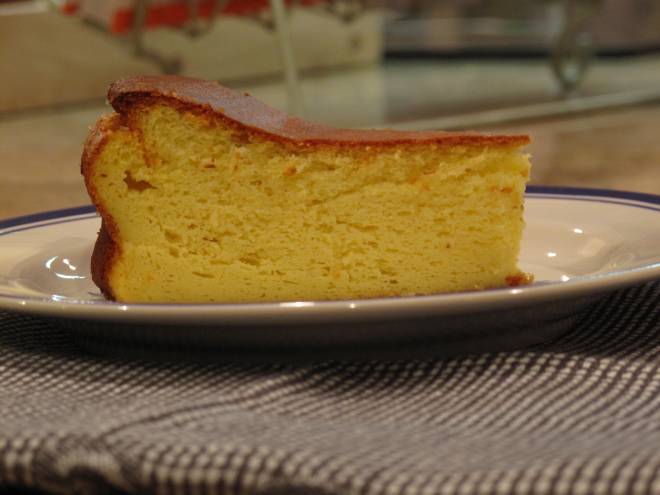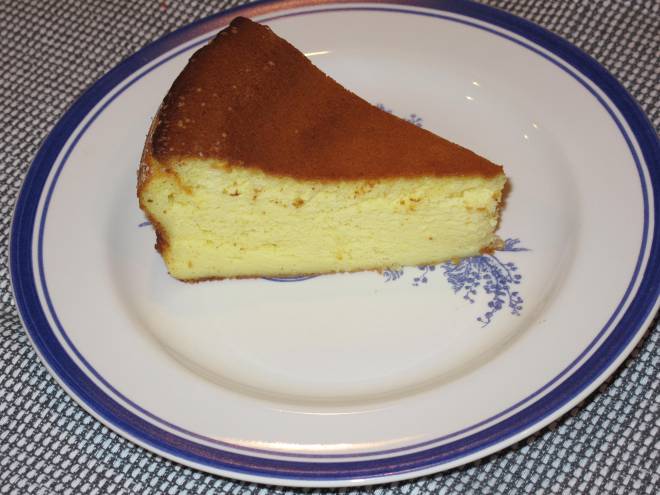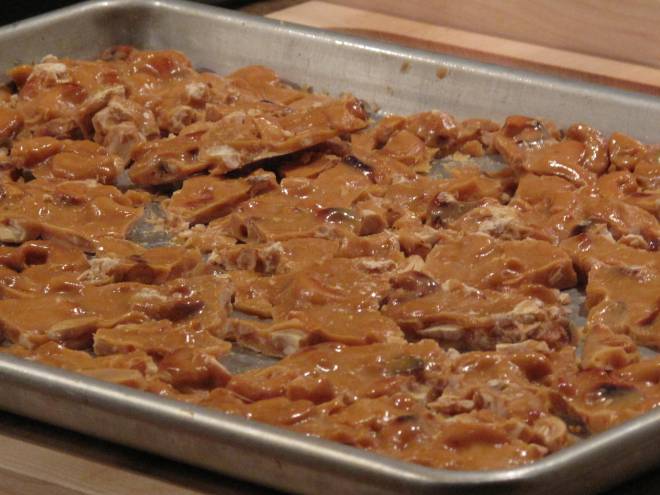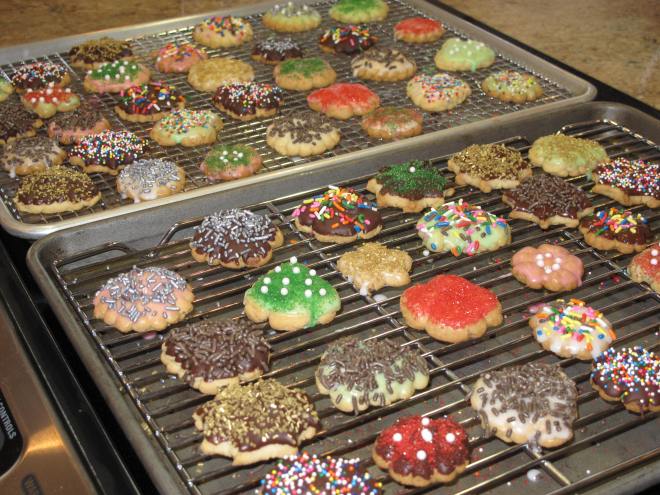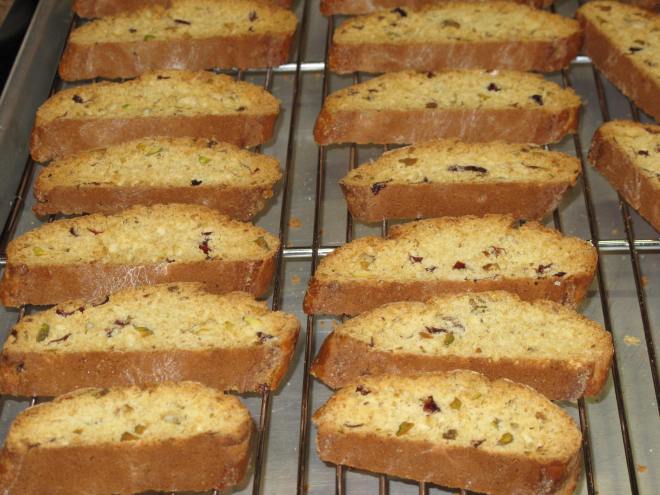We’ve had a bumper crop of green beans here on Glen Road and I have been thinking about a green bean soup recipe that my Grandma used to make from as far back as I can remember. The problem was that I didn’t have the recipe and I would never be able to make the soup from memory. So I had my mom and aunt confer and get back to me on how to make this old-time soup just like my Grandma used to make it. There are a number of foods that I remember from when I was young and this soup was one of them. I know to many that the idea of a green bean soup will not sound too appetizing. However, when you add thinly sliced onions, cubed potatoes and a garlic-laced roux, you end up with a slightly thick green bean stew with lots of flavor. My recipe is for a double batch. Some to eat now and some to freeze for later this Fall when soups just seem to taste better. So if you have a late season green bean harvest and don’t know what to do with them, why not give my Grandma’s green bean soup a try. It starts with some fresh green beans:
Ingredients:
- 4 to 5 cups of fresh green beans (cleaned and snapped into 1″ pieces)
- 4 to 5 large potatoes (cleaned, peeled and cut into cubes. I used Yukon Gold potatoes.)
- 1 medium yellow onion (thinly sliced. A mandolin works perfect. We are onion lovers so feel free to use less onion if you wish.)
- 6 tablespoons of flour
- 6 tablespoons of melted butter (let the butter cool slightly before using)
- 6 to 7 cloves of garlic
- Salt and fresh pepper to taste
Directions:
Place green beans, potatoes and onion into a stock pot and cover with water. Add enough water to cover all the vegetables. Place on medium heat and boil until the vegetables are tender.
While the vegetables are boiling, start to make the roux. Just the word “roux” makes most people think of some fancy cooking routine that takes a lot of time and patience. Don’t let the word fool you. A roux is nothing but a cooked mixture of flour and a cooking fat, like butter or vegetable oil, that is used to thicken sauces, soups and gravies. A couple of things on the roux for this soup: first, you want to cook the roux until it turns a deep golden brown. Second, keep the garlic in the pan until it starts to brown and then remove it. If you leave the garlic in too long and it burns, it will ruin the flavor of your roux. Last, mix the flour and cooled, melted butter in the pan until well combined and then add the whole garlic cloves before turning the stove heat on. Here are a few pictures showing how the roux will progress.
The beginning–the flour and cooled, melted butter combined and then the garlic cloves added before turning up the heat:
The middle–the roux is now more sauce-like and lightly simmering:
The end–when the roux is a deep golden brown, take it off the heat and let it cool a bit before you add it to the vegetable mixture. Note that the garlic cloves are gone. Again, make sure to remove them when they begin to brown. If they burn, your roux will not be good and you will need to start over.
Once your vegetables are tender, add the roux into the vegetable pot and stir the roux until it combines with the water. Once combined, add plenty of salt and pepper. Taste buds vary, so add until you are satisfied. I tend to add more, versus less, salt and pepper. For me, it’s around 1 tablespoon of salt and about three teaspoons of pepper. Remove the pot from the heat and let the soup sit for a few hours. This is one of those dishes that is better the longer you wait to eat it. Letting the soup sit for several hours or overnight in the refrigerator allows the flavors to combine. When ready to eat, place the pot back on the burner and simmer until hot. Ensure that the salt and pepper levels are adequate. Serve it any way you like. In our house, we eat just the soup with some fresh bread or rolls. Any way you serve it, this hot and hearty soup is one that pleases. At least it has in my family for almost a century. Enjoy!!



